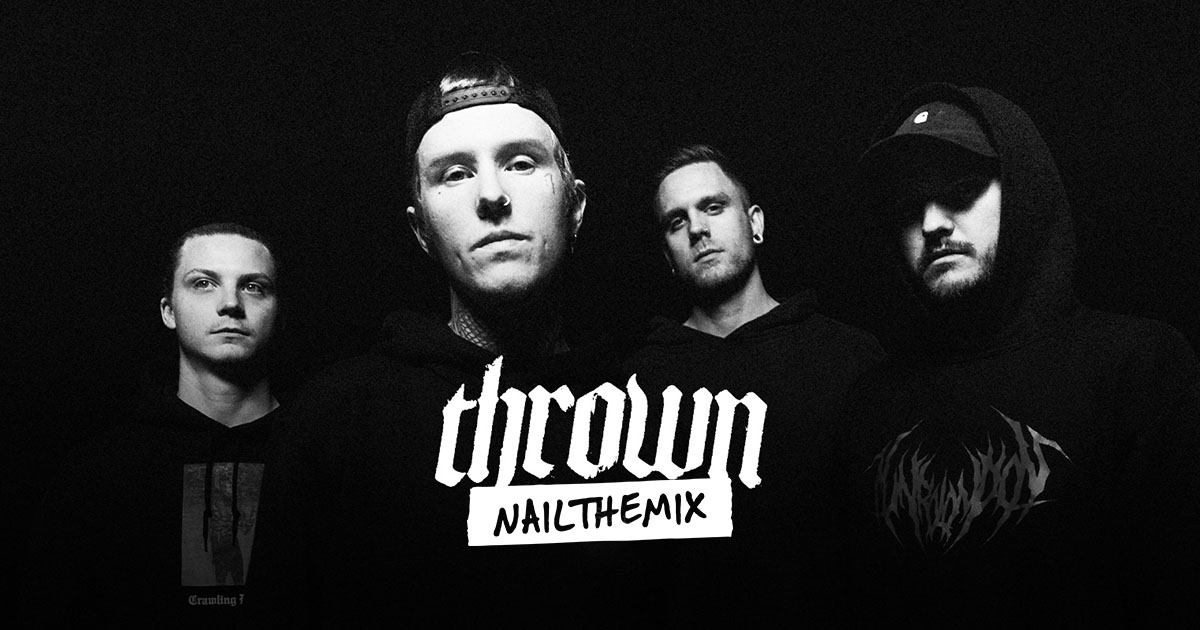
Forrester Savell’s Room Mic Techniques for Massive Karnivool Drums
Nail The Mix Staff
Let’s be real, the drum sound on a Karnivool record is an absolute force of nature. It’s huge, it’s atmospheric, but it’s still punchy as hell. It feels like it was captured in a massive cathedral, yet every hit is perfectly defined. Ever wonder how they pull that off?
We got a front-row seat as legendary producer/mixer Forrester Savell broke down the drum recording for Karnivool’s “All It Takes,” and the approach is a masterclass in capturing live energy. The twist? The bass player was in the room, playing live with the drummer. For many, that sounds like a recipe for a phase-y, uncontrollable mess. But for Savell, it was a core part of the sound.
Here’s a look at how he not only managed the chaos but harnessed it to create that iconic, spacious drum tone. If you want to elevate your own drum recordings, you need to check out these techniques from the Karnivool Nail The Mix session.
The Heart of the Beast: Wide Stereo Room Mics
Right off the bat, Forrester makes his philosophy clear: he’s a sucker for big, wide stereo drum sounds. While mono room mics have their place for a vintage, focused vibe, he almost always reaches for a stereo pair and spreads them wide to capture the full breadth of the room.
Capturing the Whole Band in One Go
For this session, the primary room mics were a stereo pair of Neumann M49s. Critically, they weren’t just pointed at the drums. They were positioned right in the center of the room to intentionally capture the blend of the drum kit and the bass amp. This wasn’t about isolating the drums; it was about capturing the sound of the band playing together in a space.
This session also had a mono room mic set up (possibly an old, gritty Sony mic) about 10 feet in front of the kit. So why didn’t it make the final mix? Simple: it collapsed the huge stereo image that the M49s were creating.
This highlights a pro-level recording tip: record more than you think you’ll need. Savell and host Eyal Levi both emphasize setting up multiple room mic options during tracking. Explore the space, try different mics and positions, and capture it all. When it comes to the mix, you don’t have to use everything. You can audition them and choose what best serves the song. It saves you from wasting precious time moving mics during the performance and gives you more creative choices later.
Taming the Bleed: Making a Live Bass Work
Hearing an entire bass performance bleeding into your drum room mics might send shivers down your spine, but this is where the magic happens—if you plan for it.
First Question: Is Your Band as Tight as Karnivool?
This technique isn’t for every band. The only reason it works here is because Karnivool is an incredibly tight, professional band. The bass performance captured in the bleed is in time, in tune, and feels fantastic. Before you try this, you have to be honest with yourself: can your band pull off a performance this solid? If not, you’re better off sticking to isolation.
The Hybrid Approach: Plan Your Overdubs
Even for a band like Karnivool, some parts are just too technical to nail perfectly in a live take. The solution is brilliantly simple: plan your overdubs ahead of time.
Forrester identified the most complex bass sections of the song and had the bassist simply not play during those parts in the main live tracking take. They captured the raw energy of the rest of the song live, then went back and overdubbed only those tricky sections to ensure a flawless performance. This hybrid method gives you the best of both worlds: live vibe and studio precision.
The Re-Amp Trick for a Clean Bass Tone
To get a powerful, clean bass tone that could be processed heavily, Savell used a clever re-amping strategy.
- Live Capture: During the live take, they captured the bass with a DI signal and a miked-up cabinet.
- The Re-Amp: Later, they took that clean DI signal and ran it back through the entire bass rig—pedals, head, and cab—and re-recorded it without the drums playing.
- Extra Thickness: To give the re-amped signal some extra weight before it hit the amp, they ran it through a high-end compressor like a Manley unit. They even performed the pedal changes live during the re-amp process, switching on distortion for the heavier sections.
The result is a third bass channel that has the same tone as the live performance but is completely free of drum bleed. This allows you to apply aggressive EQ and brighten the bass in the mix without bringing up a tsunami of harsh cymbal spill—a crucial step for dialing in those distinct Karnivool monster bass tones.
Building the Perfect Overhead Image
Forrester didn’t just stop at one set of overheads; he used two distinct stereo pairs to give him maximum flexibility in the mix. This is a fantastic way to go beyond presets and start building a signature sound.
The Wide Pair: A/B for Space
The main overheads were a wide A/B pair, likely AKG C414s, positioned over the left and right sides of the kit. This setup is all about capturing a massive stereo width and getting a clear, strong sound from the cymbals.
The Center Pair: X/Y for Focus
The second pair was a single Neumann stereo microphone with a dual capsule, set up in an X/Y configuration directly over the center of the kit. While you can achieve this with two separate pencil condensers (like AKG C451s or Neumann KM84s), the goal is the same: an X/Y setup provides a very strong, focused, and phase-coherent center image. This is especially important for solidifying the snare drum in your overheads.
The Golden Rule: Measure from the Snare
Here’s the trick that ties it all together. Forrester meticulously measured the distance from the center of the snare drum to every single overhead microphone—all four capsules. By ensuring they were all equidistant, he guaranteed that the snare transient hits every mic at the exact same time. This simple step is absolutely critical for avoiding phase issues, which can thin out your snare and make it sound weak and washy.
Start Building Your Own Massive Drum Sounds
These techniques from Forrester Savell show how thoughtful planning during recording can lead to epic results in the mix. It’s about combining technical know-how with creative problem-solving.
To recap the key ideas:
- Embrace Wide Stereo Rooms: Don’t be afraid to capture the space.
- Plan for Bleed: Use live bleed to your advantage, but have a plan to control it with overdubs and re-amping.
- Dual Overheads for Flexibility: Combine a wide A/B pair for space with a centered X/Y pair for focus.
- Phase is Everything: Always measure your overheads from the snare to keep it punchy.
Seeing these concepts explained is one thing, but watching a world-class producer actually apply them in a real mix is where the learning truly happens. At Nail The Mix, you can watch Forrester Savell mix this entire Karnivool track from start to finish, explaining every plugin, fader move, and creative decision along the way.
Karnivool on Nail The Mix
Forrester Savell mixes "Deadman"
Get the Session
If you’re ready to see exactly how the pros build these massive tones from the ground up, check out the full Karnivool session and get the multitracks to try it for yourself.
Get a new set of multi-tracks every month from a world-class artist, a livestream with the producer who mixed it, 100+ tutorials, our exclusive plugins and more
Get Started for $1






